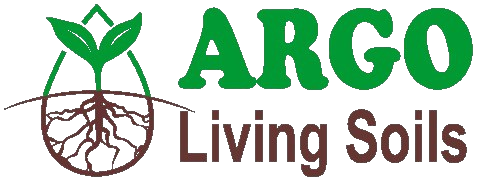
Leading agribusiness company known for producing premium organic products, including biochar soil amendments, compost tea kits, and bio-fertilizers, all formulated for high-value crops.
biochar Basics
The Next Green Revolution: Biochar Use Cases
With humankind’s carbon footprint dominating the global conversation, the need for alternative energy sources continues unabated. We have seen extraordinary leaps in renewable technologies and energy sources over the last few decades.
One such renewable technology is biochar, a carbon-rich organic material generated in the absence of oxygen using a reactor at temperatures higher than 500°C. This process, called pyrolysis, converts organic biomass (such as wood chips, crop residue or manure) into carbon-rich biochar, a specific type of charcoal.
Biochar improves soil texture and promotes root growth, reducing soil compaction. Its surface area holds onto nutrients like a sponge, making them available to plants longer, protecting them from being washed away, and helping plants absorb them more easily.
Use Cases
Biochar is being used to cut greenhouse emissions in industrial processes such as lead battery recycling, which has been one of the most successful environmental initiatives in US history.
Gopher Resource and the University of Minnesota have collaborated on an initiative, partially funded by the US Department of Defense, that replaces coke with carbon-neutral biochar in furnaces used during the recycling process.
This key replacement uses organic charcoal created from disease-infested ash trees and balsam fir, which could reduce Gopher Resource’s greenhouse emissions by up to 30%.
Lignin-derived biochar is a game changer in terms of its potential applications in lithium-ion batteries (LIBs), particularly as a conductive electrode additive and active lithium host material.
The biochar has been found to exhibit high conductivity similar to Super P carbon black, the main conducting material found in most batteries. What’s more, biochar only creates 1.2 kg of CO2 per kg while Carbon black creates 2.4kg of CO2 per kg, a reduction in greenhouse gases of 50%.
Studies suggest that replacing carbon black with biochar can significantly enhance the sustainability of LIBs, with real potential to revolutionize the lithium-ion battery industry and make it much more sustainable than it is today.
At the forefront of research into biochar applications,some of the most intriguing possibilities for using biochar in high-capacity battery technology include research into supercapacitors, battery applications, and hydrogen storage.
Biochar is versatile enough to have a porous structure with good surface area, graphitization and surface functions, all of which are important for optimal performance as an energy storage medium.
For example, the New Journal Of Chemistry reports that when creating a biochar electrode made from an apricot shell, the energy capacity was nearly 88% of the energy from a conventional supercapacitor. Further analysis also showed that after 10,000 battery cycles of charging and discharging, the biochar still had a high energy retention, retaining over 99.5% capacity.
Global temperatures are rising due to CO2 emissions from various industries, with the construction sector contributing significantly to the carbon footprint.
Notably, when biochar is added to cement and concrete, it absorbs more than twice its own weight in CO, acting as a carbon sink/carbon capture device, keeping that C02 from the atmosphere, whereas steel and concrete do not.
Biochar also improves the quality of pavement materials like asphalt during road construction. Using biochar as a binding agent increases the high-temperature properties of asphalt by up to 35% allowing the pavement to be more stable and bound together when the temperature is warmer.
All this offers hope for a more climate-conscious variety of cement and cement-like construction materials in the future.
Biochar has long been studied for its impact on agriculture and farming ever since it was added to soil as a component in Terra Preta or Amazonian Dark Earth, by peoples of the Amazon river basin over 2000 years ago. Inspired by this history, recent studies conducted by Agriculture and Agri-Food Canada (AAFC) in Nova Scotia, have shown that biochar can significantly improve soil health, increase the yield of tomatoes and sweet peppers, enhance beneficial bacteria, and reduce fertilizer use by up to 50%.
Adding Biochar to soils also increases the amount of nitrogen retained by fertilized crops and subsequently increases crop yields. One such experiment on rice saw that crops with biochar-amended soil increased their nitrogen uptake by 23-27%, which led to an increase of 8-10% in rice yield.
Biochar has a porous structure with a high surface area, making it an excellent material for adsorbing and storing hydrogen gas. This offers a sustainable alternative to conventional storage methods.
Poplar wood chip biochar, in particular, is chemically stable, ensuring safe and efficient hydrogen storage. Under optimal conditions, it can hold up to 3 wt% of its own weight in hydrogen.
The scalability and cost-effectiveness of biochar compared to other storage materials make it economically attractive. Furthermore, biochar’s ability to regenerate after hydrogen release minimizes waste at the same time. According to a recent economic benefit analysis conducted in China, the internal rate of return for biochar used for hydrogen storage is approximately 22%.
Biochar
Use
Cases
Asia
- Use Case #1: Greenhouse Gas Reduction/ Carbon-Neutral Agriculture (China)
- Use Case #2: Pine Tree Reforestation and Inoculation (Japan)
- Use Case #3: Biochar Used as Vapor-absorbent Materials for Construction Materials and Explosives (South Korea)
- Use Case #4: Water Purification (The Philippines)
A Few Additional Applications For biochar
Animal Farming
- Silage Agent
- Feed Additive
- Litter Additive
- Manure Slurry
- Treatment
- Composting
Construction
-
Insulation
-
Air Decontamination
-
Humidity Regulation
-
Concrete Additive
-
Plaster & Mortar
-
Asphalt
Waste Water
-
Active Carbon Filter
- Rain Screen Water Systems
- Composting Toilet Additive
- Septic Field Treatment
- Grey Water Systems
- Sewage Slurry Treatment
Biogas Production
- Biomass Additive
- Biogas
Decontamination
- Additive for Soil Remediation
(mining & military) - Soil Substrate
(treatment for heavy metals)